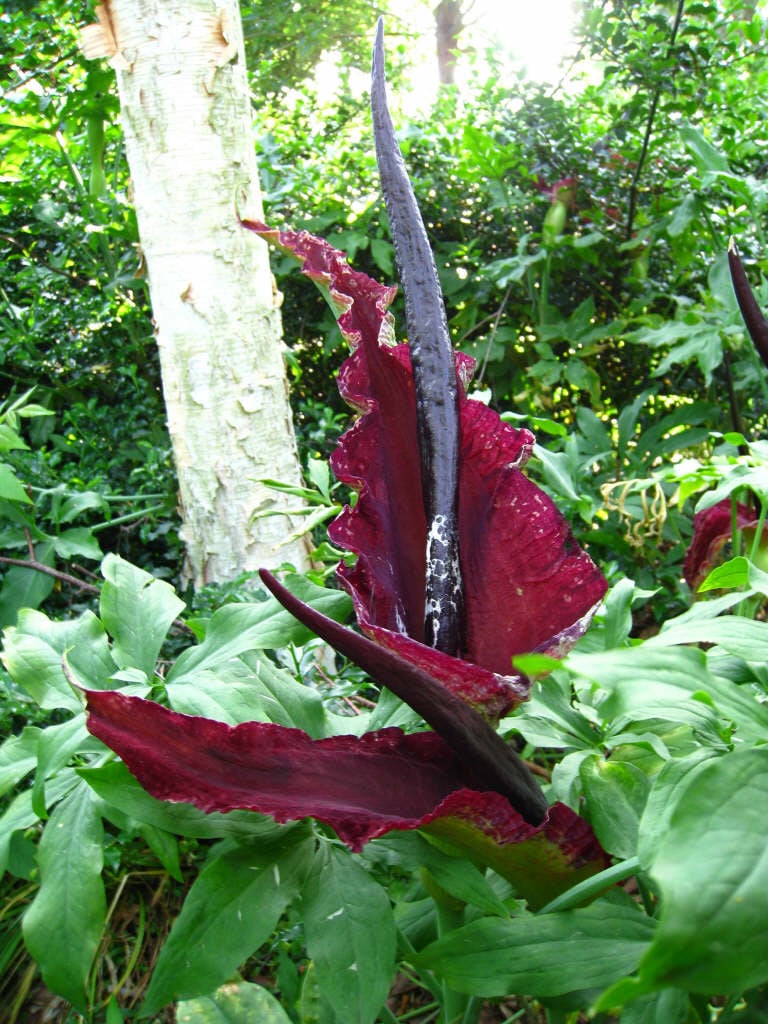Dracunculus vulgaris
dragon arum
A handsomely purple-spotted stem with several leaves 30cm wide or more, the narrow lobes sometimes splashed with silver; the flower consists of a hood-like deep purple spathe to 60cm long, with a blackish-purple spadix
Other common names
brook leekdragon
see moredragon's female
edderwort
faverole
Indian turnip
snake plant
Synonyms
Arum dracunculus
Buy this plant
Size
Ultimate height
1–1.5 metresTime to ultimate height
2–5 yearsUltimate spread
0.5–1 metresGrowing conditions
Moisture
Well–drainedpH
Acid, Alkaline, NeutralColour & scent
| Stem | Flower | Foliage | Fruit | |
| Spring | Purple | Green Grey Silver | ||
|---|---|---|---|---|
| Summer | Purple | Green Grey Silver | ||
| Autumn | ||||
| Winter |
Position
- Full sun
- Partial shade
Aspect
South–facing or West–facing or East–facing or North–facing
Exposure
Sheltered Hardiness
H3Botanical details
- Family
- Araceae
- Native to GB / Ireland
- No
- Foliage
- Deciduous
- Habit
- Bushy
- Potentially harmful
- Humans/Pets: Harmful if eaten, skin/eye irritant. Wear gloves and other protective equipment when handling For further information and contact numbers regarding pets, see the HTA guide to potentially harmful plants
- Genus
Dracunculus are tuberous deciduous perennials with attractive leaves divided into several narrow, finger-like segments, and dramatic, foul-smelling, arum-type flowers in spring or summer; the plant dies down after flowering
- Name status
Correct
- Plant range
- Mediterranean
How to grow
Cultivation
Plant tubers 15cm (6in) deep in autumn or spring in humus-rich, well-drained soil that dries out in summer. Grows best in full sun but will tolerate partial shade. Protect with a dry winter mulch. Grows well in in open glades in sheltered woodland or at the base of a sunny wall. Consider the smell of the flowers when siting
Propagation
Separate offsets in autumn or spring
Suggested planting locations and garden types
- Architectural
- Cottage and informal garden
- Banks and slopes
- Flower borders and beds
Pruning
No pruning required
Pests
Generally pest-free
Diseases
Generally disease-free
Love gardening
Sign up to receive regular gardening tips, inspiration, offers and more
View our Privacy Policy
Get involved
The Royal Horticultural Society is the UK’s leading gardening charity. We aim to enrich everyone’s life through plants, and make the UK a greener and more beautiful place.